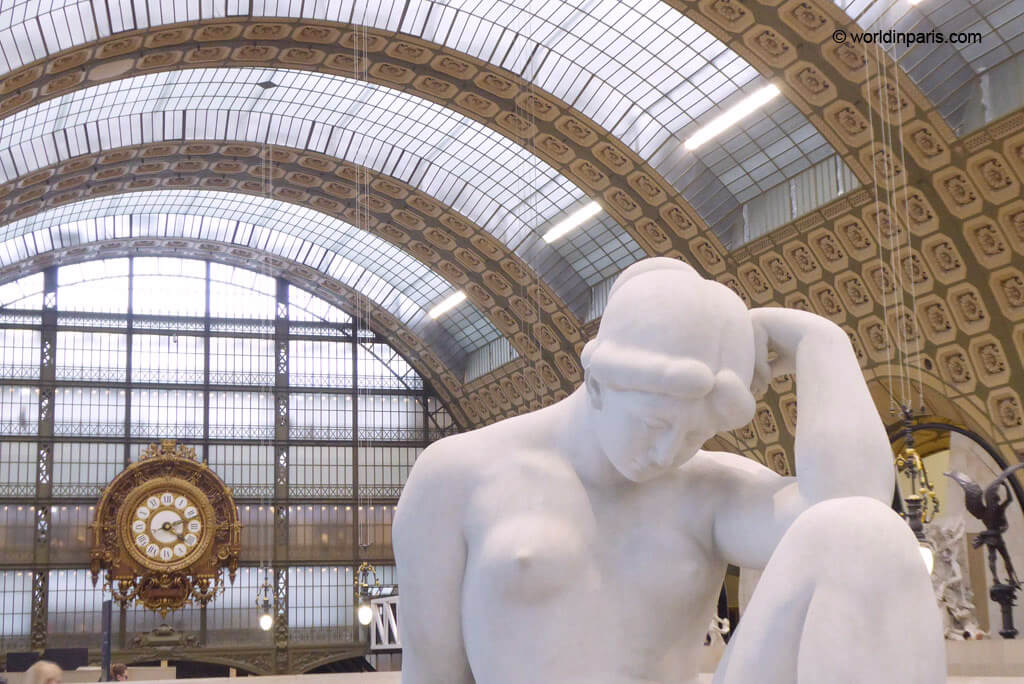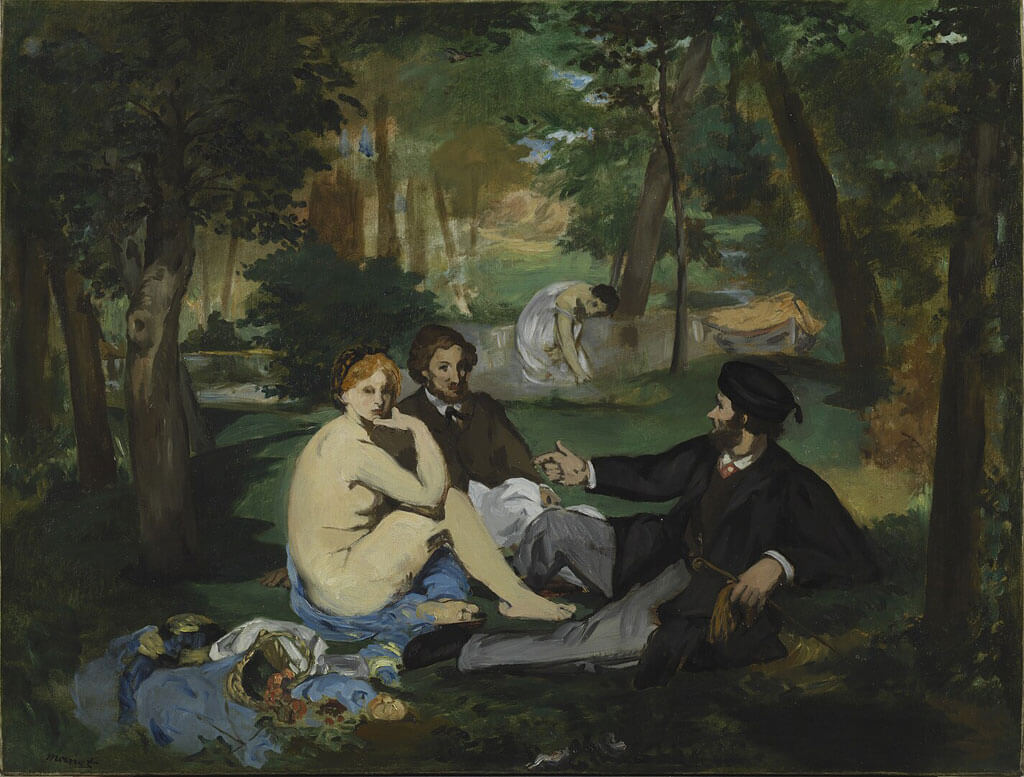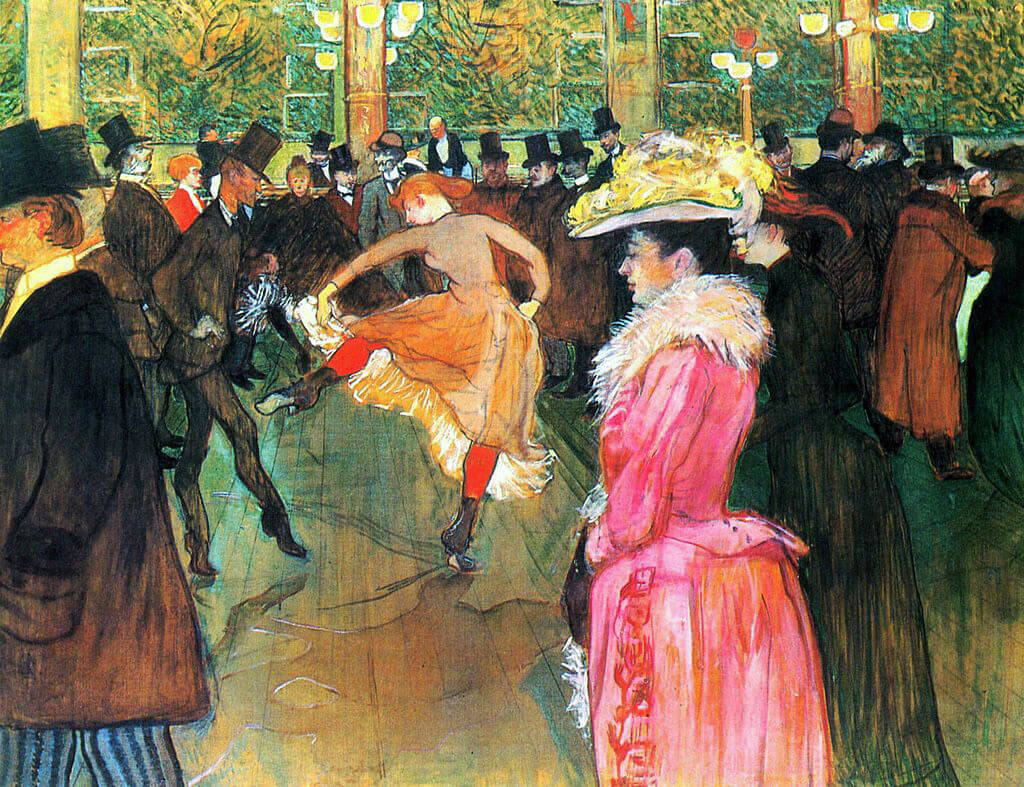Visit Musée d’Orsay, Devoted to Impressionism and Post-Impressionism Art
Visiting the Musée d’Orsay is one of the best things to do in Paris. Housed in an 1800s train station in the 7th Arrondissement, Musée d’Orsay is a museum devoted to Impressionism and Post-Impressionism Art.
With its many priceless pieces on display from art masters like Monet, Cézanne, and Van Gogh, a fantastic photographic gallery, great temporary exhibits, and stunning architecture, the Musée d’Orsay is truly unmissable!
If you are an art novice, you might be overwhelmed by the astonishing amount of artwork displayed in the museum. So take a look at my guide to the must-see in Musée d’Orsay to have an unforgettable visit. If you are in a hurry, you can jump directly to the list here.
Are You Planning a Trip to Paris Last Minute?
If you are booking a last-minute trip to Paris, I’ve got you covered! Below are our guides, top tours, hotels, and more:
» Plan: Paris Travel Planner; Paris Arrondissements Guide; Check out the best Paris Metro tickets for tourists
» Book your flight tickets with Omio; book your train tickets with Omio
Book your transfer from the airport to the city with Welcome Pickups.
» Where to Stay: Best Districts to Stay in Paris
- Le Pavillon de la Reine (historical 5-star hotel in Le Marais)
- Hotel La Comtesse (mid-range hotel with Eiffel Tower view from all the rooms!)
- Hotel Ducs de Bourgogne (super central 4-star hotel near the Louvre)
» Top-Rated Paris Tours & Tickets:
- Louvre Museum Skip-the-Line Ticket
- Eiffel Tower Summit Access Ticket
- Seine River Night Cruise
- Château de Versailles and Gardens
- Catacombs Skip-the-line tour with VIP access to restricted areas
Want skip-the-line access at museums & attractions in Paris? Get your hands on a Paris Museum Pass!
» Don’t leave without travel insurance! SafetyWing Essential plan works well for long and short trips (from 5 days up). Can also cover electronics theft through their add-on.
Table of Contents:
- Musée d’Orsay Hours and Ticket Options
- What to See at Musée d’Orsay
- The Angelus by Jean-François Millet
- Déjeuner sur l’Herbe by Edouard Manet
- Gare Saint-Lazare by Claude Monet
- Monet’s Garden in Giverny
- Les Rabotteurs de Parquet by Gustave Caillebotte
- Le Bal du Moulin de la Galette by Auguste Renoir
- Still Life paintings by Paul Cézanne
- Starry Night by Vincent Van Gogh
- Femmes de Tahiti by Paul Gauguin
- La Danse au Moulin Rouge by Henri de Toulouse-Lautrec
Musée d’Orsay Hours and Ticket Options

One of the best Impressionist museums in Paris, the Musée d’Orsay is open from Tuesday to Sunday, from 9 a.m. to 6 p.m.
On Thursdays, the museum is open until 9:45 p.m. There’s a special night ticket from 6 p.m. to 9:45 p.m. that costs 12 €.
The Orsay Museum has four different lines. The lines for guided tours, Paris city card holders, and timed entrance tickets are always the shortest. Here are the best ticket options for a smooth start to your visit.
1- Timed Entrance Ticket
The best way to secure your entrance to the museum is to purchase a timed entrance ticket. You just need to find the entrance gate displayed on your digital ticket and show up to enter the museum! This ticket also grants you access to the temporary exhibits.
2- Ticket with Digital Audio Guide
Another great entrance option is purchasing this skip-the-line ticket with digital audio guide to learn all about the museum’s fantastic artwork. The audio guide is available in 14 languages and has more than 300 commentaries. Plus, this ticket gives you flexible entry time to the museum.
3- Guided Tour with an Expert Guide
To get the most out of your time at the Musée d’Orsay, I highly recommend joining one of these two guided tours:
– The Skip the Line Impressionists Guided Tour is a great option if you are looking for quick access to the museum and a tour led by an expert art guide who will disclose all the secrets behind the top artworks of the museum. This is a shared group tour with a maximum of 15 people.
– The Masterpieces Guided Tour is a better choice if you prefer a more intimate experience, as this tour has a maximum of six people. You will follow an expert art guide to the discovery of the permanent collection’s highlights, with a focus on Impressionist paintings.
4- Paris Tourist Card
The entrance to the Musée d’Orsay is included in many tourist cards, such as the Paris Museum Pass, the Go City Pass, and the Paris Seine Pass. So, if you have one of these, you are good to go!
If you are still deciding which Paris Pass to buy for your trip, check out this Paris pass comparison to discover which is the best Paris City Pass for you.
What to See at Musée d’Orsay: Musée d’Orsay Artwork You Can’t Miss

Here’s the Musée d’Orsay artwork you can’t miss during your visit, with a bit of everything and everyone (not only Impressionists):
1- L’Angelus (Jean-François Millet, 1857-1859)

The painting depicts the prayerful recollection of two peasants who stop their work in the fields at the sound of the Angelus bell, alluded to in the distance in the background by the church’s bell tower.
The Angelus is a prayer commemorating the Annunciation, the episode in the Bible when Gabriel tells Mary she will give God a son.
Contrary to what you might think, Jean-François Millet was not prompted to paint this scene out of religious fervor but rather by nostalgia. He came from peasant stock and remembers the Angelus calling from his childhood.
An interesting aspect of the painting is the slightly different behavior of the two characters. The woman is more devout than the man since she bows her head and clasps her hands while the man simply holds his hat. The author recalls how the peasant women of his village seemed more religious than the menfolk.
2- Le Déjeuner sur l’Herbe (Edouard Manet, 1863)

Before his association with the Impressionists, Manet had a controversial reputation in the French art world. Le Déjeuner sur l’Herbe was the first of his paintings to create a scandal as it is a modern scene with a classic artistic style that accepts as nudes only the representation of mythological figures.
In this painting, we can instead see a naked woman surrounded by two gentlemen wearing modern dresses. She also looks out at the viewers as if to dare them to be shocked by her audacity. This painting raises questions of morality because there is no accepted reason for two gentlemen to sit beside a naked woman in a bucolic landscape since she is not a mythological figure but is as modern as them.
In Le Déjeuner sur l’Herbe, the mythological theme of Manet’s masters has disappeared in favor of a scene that winks at the Spanish artistic movement of Costumbrismo, which takes normal people in their everyday lives as subjects.
3- Gare Saint-Lazare (Claude Monet, 1877)

Freshly settled in Paris, Monet found a font of inspiration in the architecture of the city. A specific element that he began to paint was buildings related to the Industrial Revolution, like the Saint-Lazare train station.
The Gare Saint-Lazare is the first of a series of 12 paintings with the same subject depicted from various viewpoints. The quick brushstrokes and pastel palette that characterize Monet’s artwork interestingly almost create an oxymoron when used to paint a train station made of iron, steam and smoke.
The Gare Saint-Lazare was one of Paris’ biggest terminals, symbolizing industrial progress and new travel opportunities for the middle class with its new architecture of glass and iron.
4- Monet’s Garden in Giverny (Claude Monet, 1900)

Monet’s Garden in Giverny paintings housed at the Musée d’Orsay are iconic works that capture the beauty and tranquility of the artist’s own garden. In these masterpieces, Monet explores the interplay of light, color, and nature, particularly focusing on the vibrant flowers, the water lily pond, and the reflections of the surrounding landscape.
The paintings evoke a sense of serenity and impressionistic mastery, showcasing Monet’s deep connection to nature and his garden and his innovative approach to capturing the fleeting effects of natural light.
Some paintings around this topic you can admire at the Musée d’Orsay are Le Bassin aux Nymphéas – Harmonie Rose, Le Bassin aux Nymphéas, and Nymphéas Bleus.
5- Les Raboteurs de Parquet (Caillebotte, 1875)

The painting Les Raboteurs de Parquet (The Floor Scrapers) by Caillebotte is a fantastic example of Realism. It is one of the first examples of modernity in the subject since it portrays the working class in Paris. Before this painting, the working class was almost exclusively depicted as peasants and farmers.
Instead, Caillebotte decided to paint three workers scraping the wooden floor in a fine Haussmann-style apartment in Paris.
What is particularly striking about this painting is the fatigue the workers are experiencing, conveyed by their position bending over the floor and the light that comes through the window casting the men’s shadows on the floor, making the scene even more dramatic.
This painting was rejected at the Salon of 1875 as critics condemned the subject matter as vulgar. So Caillebotte joined the Impressionists and exhibited this painting at the Impressionist Exhibition of 1876.
6- Bal du Moulin de la Galette (Auguste Renoir, 1876)

The Bal du Moulin de la Galette by Renoir is a fantastic example of early Impressionism. The scene depicted is pretty busy due to the great number of figures painted with vivid colors and dynamic brushwork.
The Moulin de la Galette was a popular spot in Montmartre, Paris’ bohemian neighborhood. On Sundays, the working class gathered there to dance, eat galette cakes, and soak up the vibe.
Although this is now one of Renoir’s most iconic works, it was openly criticized during the 3rd Impressionist Exhibition when it was presented for the looks of the figures. In fact, the men and women look sweaty and greasy as a consequence of the warm sun and the wild dances. However, this element adds an additional layer of realism to the scene.
7- Paul Cézanne’s Still Life Paintings

Paul Cézanne is widely considered one of the greatest painters in modern art, and there are several still life paintings from this artist you can marvel at in the museum.
In his paintings, Cézanne treated objects as if they were human beings, highlighting their inner life force. Following in the footsteps of the painters of the Dutch and Spanish schools, Cézanne was sensitive to the poetry of everyday objects.
Not by chance, the painter himself declared that he wanted to “impress Paris with an apple”!
Some paintings around still life at the Musée d’Orsay are Still Life with Onions and Bottle (1895) and Apples and Onions (1895-1900).
These two paintings are particularly interesting for the new perspectives in which the objects were represented – simultaneously from several viewpoints, – making Cézanne a forerunner of Cubism.
8- Starry Night (Van Gogh, 1888)

This is one of Van Gogh‘s most beautiful paintings from the period he was living in Arles, in Southern France.
During this time, the painter was almost haunted by the will to represent the “night effect” over landscapes. In several letters he sent to his brother, Van Gogh said that the night showcased more interesting and rich colors than the day. So, he created a series of paintings with a nocturnal sky.
The Starry Night at the Musée d’Orsay is a serene scene, and this atmosphere is reinforced by the two lovers walking along the river, which is illuminated by the lights of the city and the stars, sparkling like gemstones.
9- Femmes de Tahiti (Gauguin, 1891)

Femmes de Tahiti (Tahitian Women on the Beach) is a typical painting of Gauguin during the early part of his first stay in the Pacific. When he arrived on the island of Tahiti, he imagined a primitive paradise, which is why he often painted Tahitian women busy with simple daily tasks.
Captivated by the unique environment and people of the Pacific Islands and their detachment from European cultural and aesthetic norms, Gauguin depicts these two women enveloped in the mystery and symbolism of Tahitian culture and living in an ideal, unspoiled Eden.
Another characteristic of this painting is Gauguin’s use of large spots of vivid colors, which opens the way to the chromatic feast of the Fauvism artistic movement.
10- La Danse au Moulin Rouge (Toulouse-Lautrec, 1895)

The charming neighborhood of Montmartre, with its dances, brothels and cafés, is one of Toulouse-Lautrec‘s favorite subjects.
La Danse au Moulin Rouge shows two people dancing the French cancan in the middle of a crowded dance hall inside the famous Moulin Rouge cabaret, which opened in Paris in 1889 and quickly became a hot spot in the city.
This painting is an excellent example of Toulouse-Lautrec’s artistic technique, in which he applies color directly with the brush: the faces and upper parts of the bodies of the two figures are treated with vigorous and precise brushstrokes, while the rest of the painting is barely sketched.

